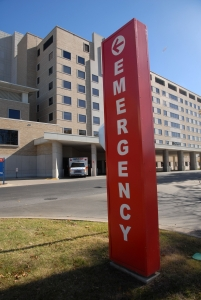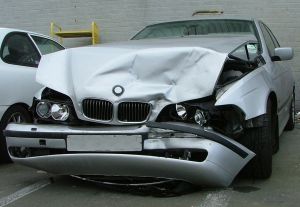I recently read an inquiry to Consumer Reports about whether or not uninsured motorist coverage protection was worth purchasing, as an additional provision in a driver’s insurance policy. In many ways, uninsured motorist coverage (“UM”) and underinsured motorist coverage (“UIM”), can be equally as important, if not more important than the liability portion of an insurance policy, itself. An auto insurance policy with limits of 50/100, for example, would offer coverage of $50,000.00 per person, and $100,000.00 per occurrence. Under these insurance policy limits, if a driver is involved in an auto accident involving one other person, the most that injured person could recover from the driver’s policy would be $50,000.00. If there were four people injured in that collision, the most all four could recover under the driver’s insurance policy would be $100,000.00.
Uninsured/Underinsured motorist coverage (UM/UIM) comes into play when someone is injured by a driver with no insurance (though it is required by law in California) or by a driver with insurance policy limits that aren’t sufficient to cover the claim of the injured person. For example, if someone has UM/UIM coverage limits of 100/300 and an uninsured driver runs a red light and causes an accident that causes injuries, the most the injured person could recover would be $100,000.00. If the offending driver had insurance policy limits of 15/30 ($15,000.00 per person, and $30,000.00 per occurrence), the injured person would be entitled to recover $15,000.00 from the offending driver, and then seek the remaining $85,000.00 (totaling $100,000.00) from their own insurance company. UM/UIM coverage is a very important protection to have, because one certainly can’t predict if another driver will cause an auto accident, and what kind of insurance coverage that person will have. Therefore, maintaining sufficient UM/UIM limits to your own auto insurance policy is very important, because it protects you, in the event someone with no insurance, or inadequate insurance, causes an auto accident.
If you or someone you love has been involved in an auto accident caused by a driver with no insurance, or limited insurance policy limits, please call the Brod Law Firm to learn your rights. At the Brod Law Firm, we’ve been fighting for the rights of injured Californians during three decades. Call today for a free initial consultation.
 San Francisco Injury Lawyer Blog
San Francisco Injury Lawyer Blog


 The
The  The San Francisco Chronicle and the Associated Press are reporting the results of a survey conducted by the Center for Disease Control and Prevention (“CDC”). The
The San Francisco Chronicle and the Associated Press are reporting the results of a survey conducted by the Center for Disease Control and Prevention (“CDC”). The  Chances are that you or someone you know was the victim of theft or involved in a car accident, but did not file a police report. Many find that waiting for the police to arrive and completing the report to be a cumbersome process and would rather heave a sigh of resignation and move on with their day. However, it may be worth the time to file a police report if you want to support your claim to your insurance company. Moreover, a police report could also come in handy during the investigation process if you have a personal injury claim against the other driver, even if it may be
Chances are that you or someone you know was the victim of theft or involved in a car accident, but did not file a police report. Many find that waiting for the police to arrive and completing the report to be a cumbersome process and would rather heave a sigh of resignation and move on with their day. However, it may be worth the time to file a police report if you want to support your claim to your insurance company. Moreover, a police report could also come in handy during the investigation process if you have a personal injury claim against the other driver, even if it may be  According to The Oakland Tribune, six year old Xavier Chevez passed away on Friday after spending a week in a coma following a car accident that claimed his mother’s life in the early hours of May 18. Investigators report that Berkley resident Jose Lumbreras, age twenty-four, was traveling at a speed of approximately sixty-five miles despite being on a quiet residential road. At about 1:15 A.M., the Cadillac driven by Lumbreras on California Street became airborne, hitting a tree and landing about twenty yards away on the opposite side of the traffic circle at Allston Way. No skid marks were found in the vicinity, suggesting Lumbreras had not attempted to slow down prior to hitting the circle’s concrete curb. Milanca Lopez, mother to Xavier and girlfriend to Lumbreras, was a passenger and died at the scene. Investigators report that Ms. Lopez had not been wearing a seatbelt. Her son, who was riding in the back seat and was wearing his seatbelt but was not in a booster seat (see our prior
According to The Oakland Tribune, six year old Xavier Chevez passed away on Friday after spending a week in a coma following a car accident that claimed his mother’s life in the early hours of May 18. Investigators report that Berkley resident Jose Lumbreras, age twenty-four, was traveling at a speed of approximately sixty-five miles despite being on a quiet residential road. At about 1:15 A.M., the Cadillac driven by Lumbreras on California Street became airborne, hitting a tree and landing about twenty yards away on the opposite side of the traffic circle at Allston Way. No skid marks were found in the vicinity, suggesting Lumbreras had not attempted to slow down prior to hitting the circle’s concrete curb. Milanca Lopez, mother to Xavier and girlfriend to Lumbreras, was a passenger and died at the scene. Investigators report that Ms. Lopez had not been wearing a seatbelt. Her son, who was riding in the back seat and was wearing his seatbelt but was not in a booster seat (see our prior  Memorial Day is an opportunity to remember the men and women who gave their lives protecting our country and serving in the various branches of the U.S. Armed Forces. The holiday dates back to the post-Civil War era when it was known as Declaration Day. The day has been celebrated more broadly only since taking its current name in 1967 and being specified as a Monday observance the following year. Our
Memorial Day is an opportunity to remember the men and women who gave their lives protecting our country and serving in the various branches of the U.S. Armed Forces. The holiday dates back to the post-Civil War era when it was known as Declaration Day. The day has been celebrated more broadly only since taking its current name in 1967 and being specified as a Monday observance the following year. Our  On April 24 2012, the Senate passed
On April 24 2012, the Senate passed  According to a report in The Sacramento Bee, Auburn Police responded to a report of a noisy party on Buckeye Court early Sunday morning. While standing outside their own vehicles at the scene, two officers ordered a driver to stop after the suspect failed to heed a stop sign. A third officer, who was in his car at the time, tried to overtake the suspect but the motorist continued to flee at a high speed. The driver sped through additional intersections, again failing to obey stop signs, until arriving at the intersection of Vista Del Monte and Perkins Way. At that location, the suspect lost control of the car which left the roadway and collided with a parked vehicle before crashing into a pillar that was part of a home on Vista Del Monte. No one in the home was injured. Police released a male passenger but arrested the car’s driver, Ross Levin, and took him into custody on suspicion of driving under the influence of alcohol.
According to a report in The Sacramento Bee, Auburn Police responded to a report of a noisy party on Buckeye Court early Sunday morning. While standing outside their own vehicles at the scene, two officers ordered a driver to stop after the suspect failed to heed a stop sign. A third officer, who was in his car at the time, tried to overtake the suspect but the motorist continued to flee at a high speed. The driver sped through additional intersections, again failing to obey stop signs, until arriving at the intersection of Vista Del Monte and Perkins Way. At that location, the suspect lost control of the car which left the roadway and collided with a parked vehicle before crashing into a pillar that was part of a home on Vista Del Monte. No one in the home was injured. Police released a male passenger but arrested the car’s driver, Ross Levin, and took him into custody on suspicion of driving under the influence of alcohol.  A recent report in The San Francisco Chronicle served as a particular reminder of the fact that every victim lost in a traffic fatality had his or her own story. Sena Putra, a 47 year old Oakland resident, was returning to work after lunch on Thursday. He was crossing 13th Street in the South of Market neighborhood of San Francisco when he was hit by a gasoline tanker truck as it turned onto 13th from Folsom Street. Investigators reported that Putra was crossing in a crosswalk and had a green light. Putra died at the accident scene. The driver of the truck did remain at the scene and cooperated with police. As of the time of the report, no arrest had been made.
A recent report in The San Francisco Chronicle served as a particular reminder of the fact that every victim lost in a traffic fatality had his or her own story. Sena Putra, a 47 year old Oakland resident, was returning to work after lunch on Thursday. He was crossing 13th Street in the South of Market neighborhood of San Francisco when he was hit by a gasoline tanker truck as it turned onto 13th from Folsom Street. Investigators reported that Putra was crossing in a crosswalk and had a green light. Putra died at the accident scene. The driver of the truck did remain at the scene and cooperated with police. As of the time of the report, no arrest had been made. The weather can turn on a dime in the Bay Area. Last week, the cold, windy weather suddenly gave way to the sun, giving Bay Area residents an excuse for weekend getaways and barbeques Yet, an unfortunate aspect of the recently improved weather was a slew of auto accidents. Rainy weather makes driving an exercise in focus and restraint, due to the low visibility and slick roads associated with it. Meanwhile, warmer temperatures mean more people on the roads, thus increasing the chances of a crash.
The weather can turn on a dime in the Bay Area. Last week, the cold, windy weather suddenly gave way to the sun, giving Bay Area residents an excuse for weekend getaways and barbeques Yet, an unfortunate aspect of the recently improved weather was a slew of auto accidents. Rainy weather makes driving an exercise in focus and restraint, due to the low visibility and slick roads associated with it. Meanwhile, warmer temperatures mean more people on the roads, thus increasing the chances of a crash.